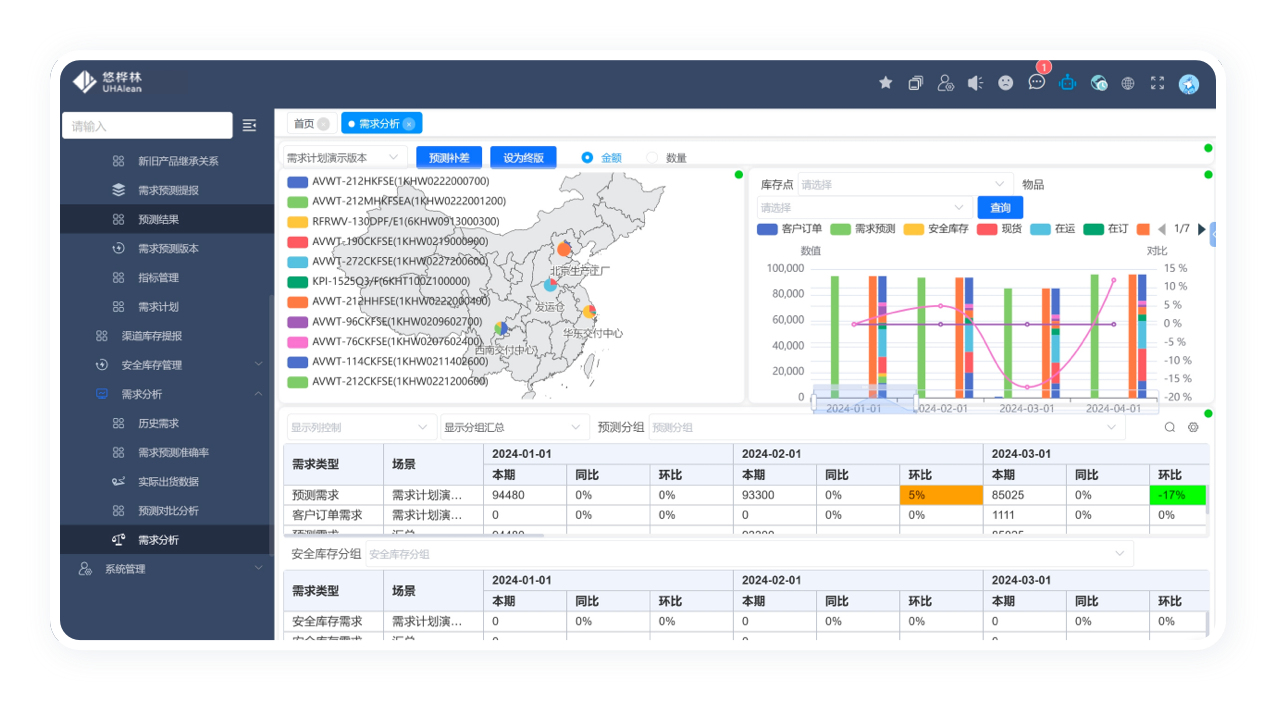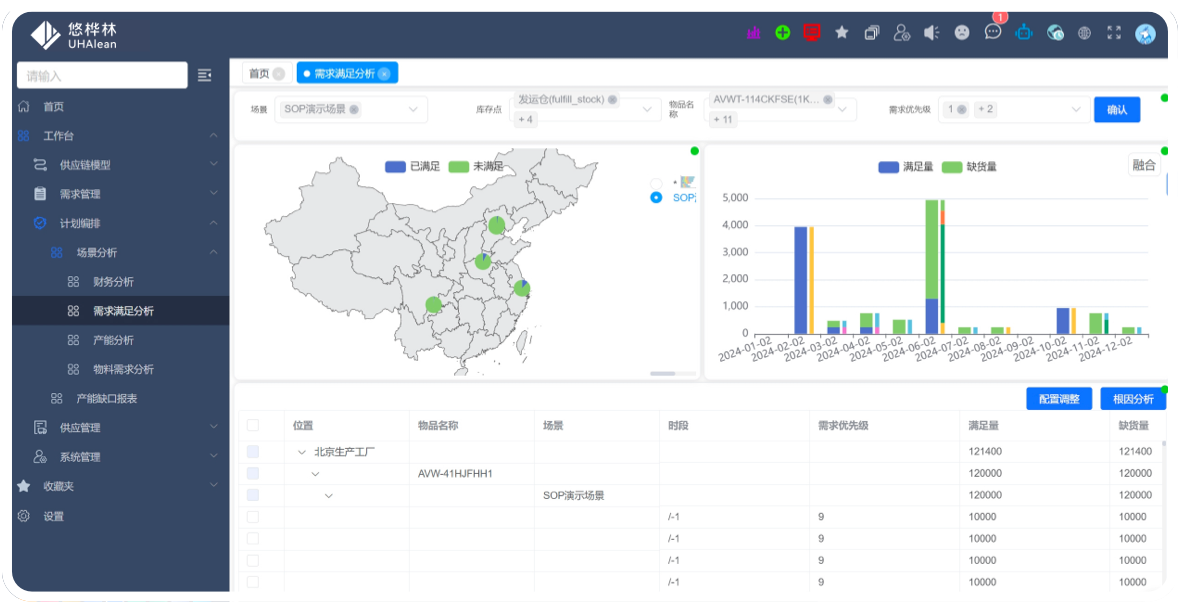

Industry-leading algorithms and multi-model prediction meet the multi-scenario prediction needs of enterprises and assist enterprises in making intelligent decisions


Observe the prediction results from different perspectives, such as the customer perspective, planner perspective, product structure perspective, time dimension perspective, distribution channel perspective, etc.


Algorithm Advantages of Machine Learning and Data Mining and the Flexible Response of Manual Recognition to Non-standard and Emergency Events


Demand planning can be stored and traced in multiple versions.


Run the prediction model through hypothetical scenarios and visualize the prediction results
Utilize advanced Machine Learning algorithms to automatically analyze large amounts of data, conduct feature analysis, scenario analysis of seasonal fluctuations, promotional effects, holiday impacts, etc., as well as the quantity-price relationship of promotions, and generate accurate sales forecasts. Users can easily set prediction parameters, view and compare the results of multiple prediction models, and select the most appropriate solution.


Provides multi-model and multi-scenario visualization fitting results, while automatically optimizing parameters through grid search, random search, and genetic algorithm , reusing recognized models and features as rules, effectively reducing users' learning and usage costs.
Based on market uncertainty, simulate the impact of different market strategies or external events on demand. By creating hypothetical scenarios, such as new promotional activities, economic fluctuations, etc., the system will re-run the forecasting model based on these inputs, showing the expected sales changes under each scenario, and providing data support for strategic planning.


Based on strategic planning and market volatility requirements, when enterprises stockpile, they use intelligent decision-making technology to balance inventory supply under dynamic demand changes and balance inventory investment, providing enterprises with capabilities such as multi-level inventory planning, dynamic safety stock guidance, inventory value analysis, inventory cost and supply risk early warning, etc.



Assist customers in building demand forecasting capabilities, formulate corresponding sales strategies based on data analysis and fluctuations in commodity sales, monitor inventory levels, and continuously optimize demand plans.